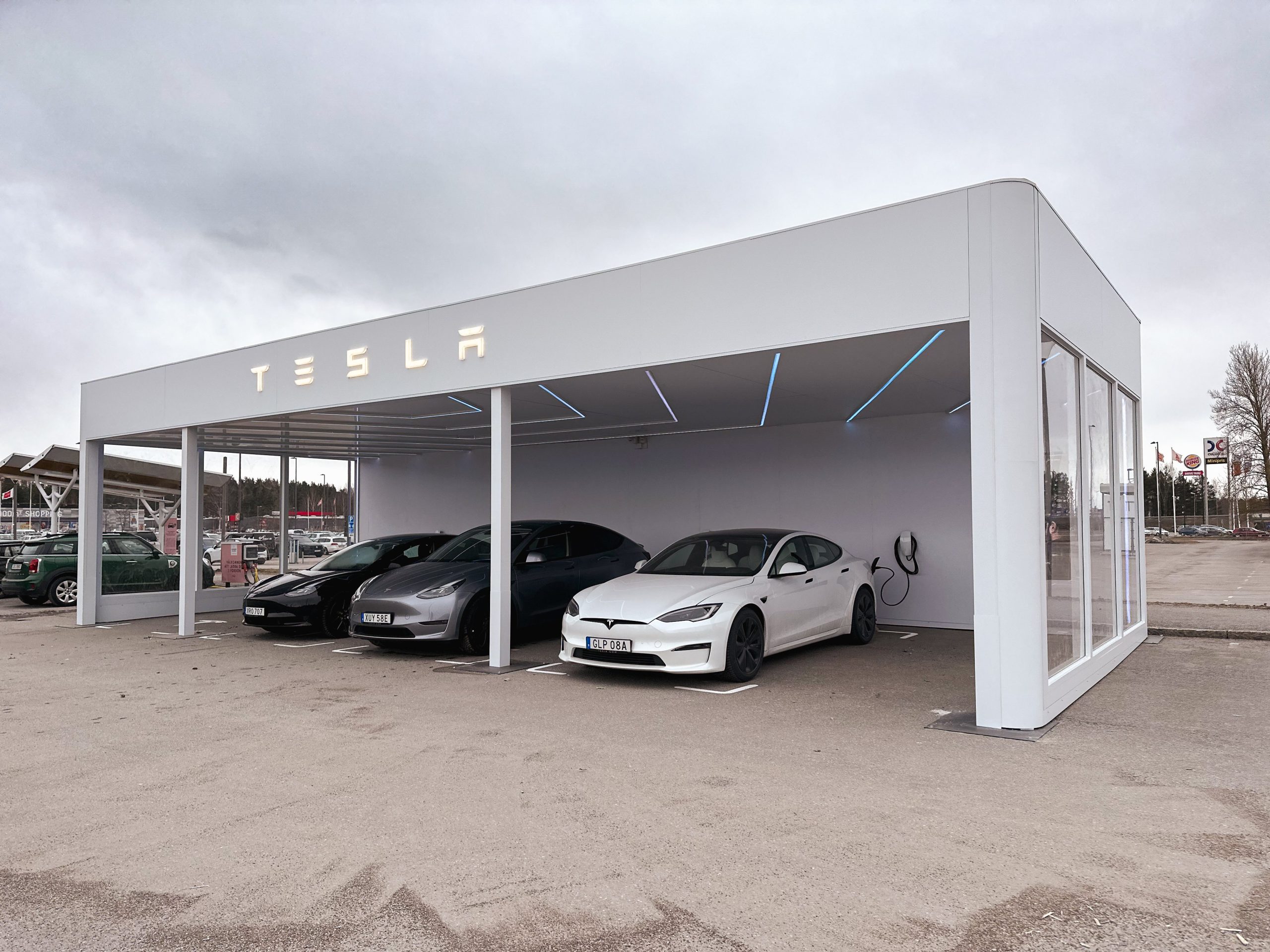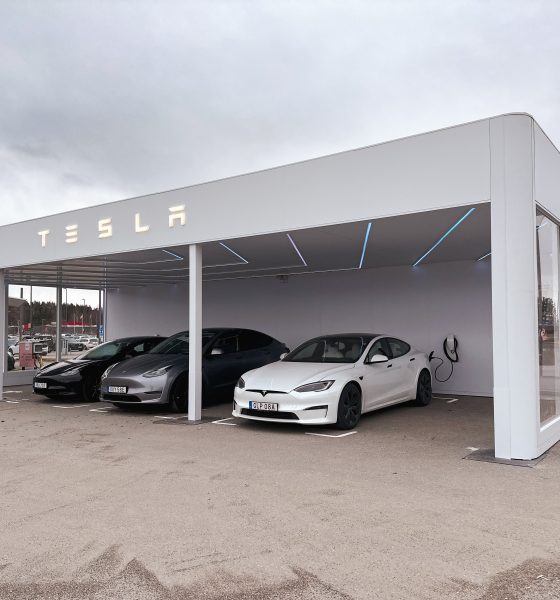Update: 4/29 6:02 pm est – Added comment from Troy Teslike, starts para. 4
The volume of Tesla inventory vehicles in Europe has spiked to its highest point this year, indicating the potential for another price cut.
Tesla has been finding a lot of success in the European market ever since it introduced its Model Y SUV to the continent, which has quickly become not only Tesla’s top seller in the region but the top-sold vehicle in many of Europe’s largest economies. Despite this success, Tesla saw a slight but noticeable decline in sales in the European market during the year’s first quarter. Now, trouble seems to continue for the American EV brand, which now sees a record number of inventoried vehicles in Europe.
The revelation regarding Tesla’s European inventory spike was posted on Twitter by Troy Teslike, who tracks Tesla sales and production.
Here is a chart that shows Tesla’s inventory in Europe over time (cars listed for sale on Tesla’s website): https://t.co/xbjD6sh8wm Supply is not an issue anymore. Therefore Q2 sales should give us a clear picture of demand
Europe sales:
• 94,819 in Q4 2022
• 93,784 in Q1 2023 pic.twitter.com/BxQm2bJX4P— Troy Teslike (@TroyTeslike) April 28, 2023
The results posted on Twitter show that Tesla has reached well above its record high for the year, primarily with units of Model 3s and Model Ys. However, a surprising number of Model Ss and Model Xs also seem to be accumulating.
In a comment to Teslarati, Troy Teslike laid out a couple of reasons Tesla may be experiencing a buildup of units in Europe. “I think the inventory buildup in Europe suggests a shift from being production-limited to demand-limited,” Teslike begins. “However, this doesn’t mean deliveries will be affected. It just means production exceeds demand.”
Teslike then points out that, thanks to Tesla’s continuing massive production ramp, a buildup of inventoried units has been slowly but surely creeping up on the automaker. “Tesla’s global production was higher than deliveries in the last four quarters. That resulted in an increase in inventory. Most of that inventory build-up happened in Europe.”
Tesla’s inventory at the end of Q1 was equal to 15 days of supply based on page 6 of Tesla’s shareholder letter https://t.co/n3wXWLqrHl Here is how that compares to other quarters.
Production was higher than deliveries in the last 4 quarters. pic.twitter.com/s5zc5s9Kgp
— Troy Teslike (@TroyTeslike) April 28, 2023
Concluding his statement, Teslike points to a specific source, Tesla Giga Shanghai. Thanks to Shanghai’s incredible production output, and Tesla’s uphill battle in China, excess units are ending up in Europe, but, according to Teslike, this may not be a bad thing. With added volume on the continent, the American automaker will be able to address demand quicker than ever, the only question is, will it be able to garner the necessary demand?
This strange inventory anomaly has attracted countless analysts besides Teslike, looking to find the stem of the issue. Does it stem from slowing demand for Tesla vehicles? Is it indicative of a slowing EV segment more generally? Is this issue just a symptom of more significant regional macroeconomic problems? Or, for the optimists, is this sudden spike even something worthy of concern?
It goes without saying that Europe, much like many other Western markets, has seen a good deal of economic turbulence in the first half of the year, including persistent high living costs, high inflation, and even the potential for bank collapse, however considering the success of other EV makers, this factor is unlikely the sole contributor.
Furthermore, with the dramatic uptick in EV sales seen at brands like Porsche, BMW, and Mercedes, it would be hard to believe that Tesla’s offerings suffer from a lack of affordability, especially as they already undercut these competitors by a substantial margin.
It should be noted that competition within the EV market, particularly in Europe, has gotten quite fierce with the entrance of countless new offerings, not only from the aforementioned luxury competitors of Tesla but also from Volkswagen, Renault, Peugeot, and Ford; brands that are all reasonably successful within the European affordable vehicle market outside of EV sales.
Tesla CEO Elon Musk has made it clear that Tesla’s pricing strategy, attempting to continue to lower prices to attract more customers, will continue well into the future. However, considering the current round of price cuts has still resulted in a record spike in inventory, it remains unclear if this will be the fix Tesla is looking for.
What do you think of the article? Do you have any comments, questions, or concerns? Shoot me an email at william@teslarati.com. You can also reach me on Twitter @WilliamWritin. If you have news tips, email us at tips@teslarati.com!

News
Tesla starts showing how FSD will change lives in Europe
Local officials tested the system on narrow country roads and were impressed by FSD’s smooth, human-like driving, with some calling the service a game-changer for everyday life in areas that are far from urban centers.

Tesla has launched Europe’s first public shuttle service using Full Self-Driving (Supervised) in the rural Eifelkreis Bitburg-Prüm region of Germany, demonstrating how the technology can restore independence and mobility for people who struggle with limited transport options.
Local officials tested the system on narrow country roads and were impressed by FSD’s smooth, human-like driving, with some calling the service a game-changer for everyday life in areas that are far from urban centers.
Officials see real impact on rural residents
Arzfeld Mayor Johannes Kuhl and District Administrator Andreas Kruppert personally tested the Tesla shuttle service. This allowed them to see just how well FSD navigated winding lanes and rural roads confidently. Kruppert said, “Autonomous driving sounds like science fiction to many, but we simply see here that it works totally well in rural regions too.” Kuhl, for his part, also noted that FSD “feels like a very experienced driver.”
The pilot complements the area’s “Citizen Bus” program, which provides on-demand rides for elderly residents who can no longer drive themselves. Tesla Europe shared a video of a demonstration of the service, highlighting how FSD gives people their freedom back, even in places where public transport is not as prevalent.
What the Ministry for Economic Affairs and Transport says
Rhineland-Palatinate’s Minister Daniela Schmitt supported the project, praising the collaboration that made this “first of its kind in Europe” possible. As per the ministry, the rural rollout for the service shows FSD’s potential beyond major cities, and it delivers tangible benefits like grocery runs, doctor visits, and social connections for isolated residents.
“Reliable and flexible mobility is especially vital in rural areas. With the launch of a shuttle service using self-driving vehicles (FSD supervised) by Tesla in the Eifelkreis Bitburg-Prüm, an innovative pilot project is now getting underway that complements local community bus services. It is the first project of its kind in Europe.
“The result is a real gain for rural mobility: greater accessibility, more flexibility and tangible benefits for everyday life. A strong signal for innovation, cooperation and future-oriented mobility beyond urban centers,” the ministry wrote in a LinkedIn post.
News
Tesla China quietly posts Robotaxi-related job listing
Tesla China is currently seeking a Low Voltage Electrical Engineer to work on circuit board design for the company’s autonomous vehicles.

Tesla has posted a new job listing in Shanghai explicitly tied to its Robotaxi program, fueling speculation that the company is preparing to launch its dedicated autonomous ride-hailing service in China.
As noted in the listing, Tesla China is currently seeking a Low Voltage Electrical Engineer to work on circuit board design for the company’s autonomous vehicles.
Robotaxi-specific role
The listing, which was shared on social media platform X by industry watcher @tslaming, suggested that Tesla China is looking to fill the role urgently. The job listing itself specifically mentions that the person hired for the role will be working on the Low Voltage Hardware team, which would design the circuit boards that would serve as the nervous system of the Robotaxi.
Key tasks for the role, as indicated in the job listing, include collaboration with PCB layout, firmware, mechanical, program management, and validation teams, among other responsibilities. The role is based in Shanghai.
China Robotaxi launch
China represents a massive potential market for robotaxis, with its dense urban centers and supportive policies in select cities. Tesla has limited permission to roll out FSD in the country, though despite this, its vehicles have been hailed as among the best in the market when it comes to autonomous features. So far, at least, it appears that China supports Tesla’s FSD and Robotaxi rollout.
This was hinted at in November, when Tesla brought the Cybercab to the 8th China International Import Expo (CIIE) in Shanghai, marking the first time that the autonomous two-seater was brought to the Asia-Pacific region. The vehicle, despite not having a release date in China, received a significant amount of interest among the event’s attendees.
Elon Musk
Elon Musk and Tesla AI Director share insights after empty driver seat Robotaxi rides
The executives’ unoccupied tests hint at the rapid progress of Tesla’s unsupervised Robotaxi efforts.

Tesla CEO Elon Musk and AI Director Ashok Elluswamy celebrated Christmas Eve by sharing personal experiences with Robotaxi vehicles that had no safety monitor or occupant in the driver’s seat. Musk described the system’s “perfect driving” around Austin, while Elluswamy posted video from the back seat, calling it “an amazing experience.”
The executives’ unoccupied tests hint at the rapid progress of Tesla’s unsupervised Robotaxi efforts.
Elon and Ashok’s firsthand Robotaxi insights
Prior to Musk and the Tesla AI Director’s posts, sightings of unmanned Teslas navigating public roads were widely shared on social media. One such vehicle was spotted in Austin, Texas, which Elon Musk acknowleged by stating that “Testing is underway with no occupants in the car.”
Based on his Christmas Eve post, Musk seemed to have tested an unmanned Tesla himself. “A Tesla with no safety monitor in the car and me sitting in the passenger seat took me all around Austin on Sunday with perfect driving,” Musk wrote in his post.
Elluswamy responded with a 2-minute video showing himself in the rear of an unmanned Tesla. The video featured the vehicle’s empty front seats, as well as its smooth handling through real-world traffic. He captioned his video with the words, “It’s an amazing experience!”
Towards Unsupervised operations
During an xAI Hackathon earlier this month, Elon Musk mentioned that Tesla owed be removing Safety Monitors from its Robotaxis in Austin in just three weeks. “Unsupervised is pretty much solved at this point. So there will be Tesla Robotaxis operating in Austin with no one in them. Not even anyone in the passenger seat in about three weeks,” he said. Musk echoed similar estimates at the 2025 Annual Shareholder Meeting and the Q3 2025 earnings call.
Considering the insights that were posted Musk and Elluswamy, it does appear that Tesla is working hard towards operating its Robotaxis with no safety monitors. This is quite impressive considering that the service was launched just earlier this year.










